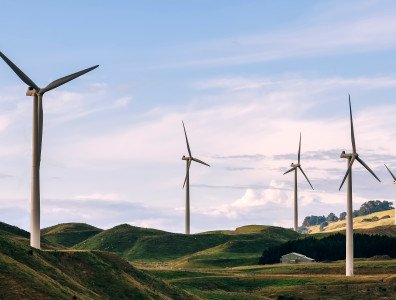What are carbon offsets? Are they a credible climate solution?
You’ll hear lots of pledges from companies and governments to cut the greenhouse gases they release to “net-zero.” That’s because they need to completely halt their release of carbon emissions to avoid some of the worst consequences of climate change. But how to get there? In many cases, it may prove too costly to go all the way to zero. That’s where the concept of carbon offsets comes in, though their use is controversial.
1. What’s a carbon offset?
The idea is that when a company, government or individual releases greenhouse gases, they can pay someone else to remove an equivalent amount of climate pollution from the atmosphere. If, say, a company operates a fleet of diesel-powered trucks that generates 100 tons of carbon dioxide annually, it might pay a landowner to plant trees that absorb an equal amount of CO2. In theory, the trees have canceled out — or offset — the impact of the trucks. The term has been used since the early days of environmental initiatives, such as the 1970 US Clean Air Act, though it’s now applied more widely.
2. What’s the appeal?
For many industries, the cost of addressing their climate pollution can be daunting. For instance, it costs well over $100 per ton to capture CO2 from industrial plants such as aluminum smelters and then bury it permanently underground. Offset projects that plant trees or destroy landfill methane might reduce heat-trapping gases for a fraction of the cost. By allowing companies or governments to pay — and take credit — for cheaper emission reductions beyond their own field of activity, the cost of addressing climate change becomes less formidable. That is if those promised reductions are real, which is often not the case.
3. How big is the market for carbon offsets?
Most of the discussion of offsets revolves around voluntary offsets purchased to meet self-imposed goals (as opposed to the mandatory pollution credits purchased by companies in jurisdictions such as the European Union). Annual transactions surged to nearly $2 billion in 2021, according to Ecosystem Marketplace. The deals involve developers who propose projects, registries that validate whether the carbon savings are real, and brokers who match offsets with buyers. But as criticism mounted over the effectiveness of offset projects, the market has lost steam. In 2022, companies bought slightly fewer offsets “due to fears of reputational risk from purchasing low-quality credits,” according to BloombergNEF.
4. What’s the problem with carbon offsets?
No single entity oversees the market for carbon offsets. Voluntary carbon offsets are managed by a patchwork of nonprofits that run various registries that oversee offset projects. Most fail in the crucial measure known as “additionality.” To be credible, offsets must deliver additional reductions — meaning the climate-friendly activity wouldn’t have occurred in the absence of the carbon payments. In fact, the market is flooded with blatantly non-additional projects — like conservation groups or local governments selling offsets for preserving trees that weren’t going to be chopped down anyway. In one case, Bloomberg Green found that the largest carbon reforestation project in North America sold millions of offsets, even though most of its participating landowners had already planted their trees — sometimes more than a decade earlier — through a government program.
5. Are all offset projects flawed?
No. Projects that flare methane leaking from coal mines or destroy climate-warming gases produced by industry can more easily show that they’re adding real benefits. Companies including Airbus, JPMorgan Chase and All Nippon Airways, for instance, have signed deals to purchase offsets from direct air capture, or DAC projects, which use machines to pull carbon dioxide out of the air and store it underground. This expensive process wouldn’t occur without carbon payments, with costs topping $1,000 per ton in 2023. Meanwhile, Calyx Global, a company that rates the quality of carbon projects, has found less-popular project types, like the destruction of methane from landfills, to be more effective than most.
6. Can offsets be fixed?
There’s a notion that offsets have turned into a “get-out-of-jail-free” card for big polluters. A growing number of scientists are raising doubts about the effectiveness of the market, and some sellers of offsets have joined the call for more guidelines. The industry would prefer not to see offsets as a way for a company to avoid costlier but more effective action to cut its own carbon emissions. The most publicized effort to fix things is from a group called the Integrity Council for the Voluntary Carbon Market, which is seeking to develop stronger rules and guidance for carbon projects.
7. What’s the main challenge?
Many of the biggest buyers are airlines and oil companies such as Shell Plc and BP Plc that are doing little to corral their fast-expanding carbon footprints. A debate has emerged about how much companies should be trying to shrink their carbon footprints before they offset what they deem to be unavoidable emissions. The industry could face a reckoning on this question in the coming months and years.
The Reference Shelf
- A guide to understanding carbon offsets, from the Greenhouse Gas Management Institute and the Stockholm Environment Institute.
- Investigations by Bloomberg Green into public forests flooding the market with dubious offsets, a top seller of offsets probing its own projects, and how large companies have relied on cheap offsets from renewable energy that don’t counteract global warming.
- BloombergNEF’s long-term outlook on offsets.
- How carbon offsets got on the wrong track, from the Zero podcast by Bloomberg Green.
- A report on the state of carbon credits from Sylvera, a company that rates the quality of offset projects.
- Related QuickTake on carbon neutral, carbon capture and carbon markets.



